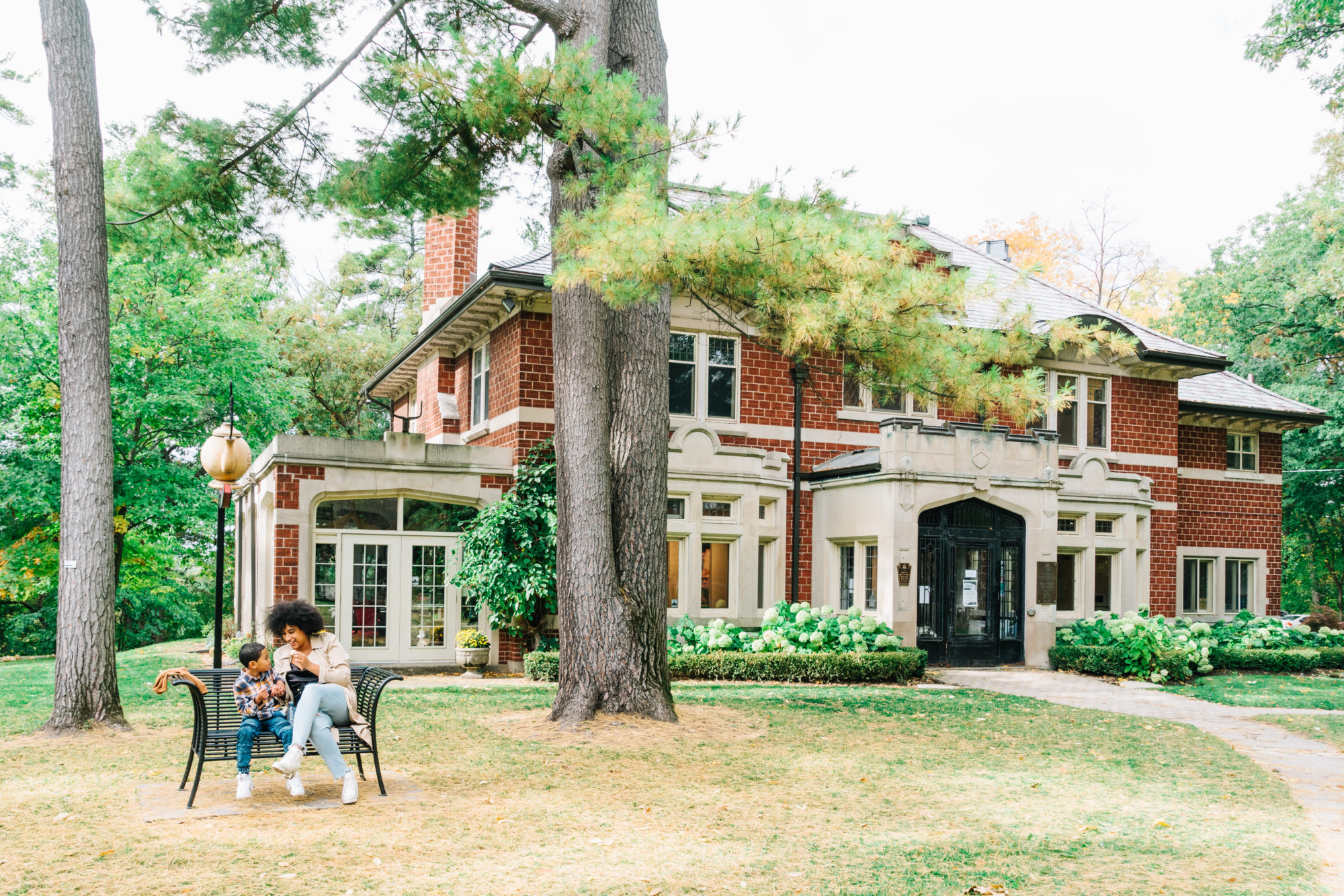4.1 Case Study: Clear Roles and Shared Objectives
Case Study
The Glenhyrst Art Gallery
Brantford, Ontario
Typology: Large/Complex, Small Urban
Model: Owner with Operator – Non-interpreted Site
Owner: City of Brantford
Operator: Glenhyrst Art Gallery
Third Party: The Golden Tea Pot

The Partnership
This large 16-acre site along the Grand River was bequeathed to the City of Brantford in 1956 to serve as an art gallery, and since 1986 has been operated by the Glenhyrst Art Gallery, an independent non-profit charity. The Gallery is housed in the former residence built for entrepreneur Edmund Cockshutt, and a portion of the ground floor is occupied by The Golden Tea Pot, a tearoom operated under a commercial lease agreement. The outbuildings, including the former Coach House, serve as additional programming space for the Gallery.
The City retains the responsibility for general maintenance of the buildings and grounds, while the Gallery addresses any maintenance or improvements directly related to their programming – including major capital works specifically designed for their needs. The City provides annual financial support to the Gallery’s operating costs – approximately 20% of the overall budget. The remaining budget revenue comes from programming income and fundraising.
Why It Works
Glenhyrst’s long-standing vision and mandate as an art gallery has created an undeniable stability. However, the real success of the site is based on the active collaboration between the partners. This collaboration goes beyond clearly defined and respected responsibilities laid out in the lease agreement, extending to actively supporting each other’s goals. For example, when planning the capital campaign to fund a major renovation of the Coach House to better accommodate the Gallery programming, the partners accessed multiple funding sources, each taking the lead when best positioned to succeed.
The Gallery Director plays an important role on the City’s Cultural Advisory Committee, and so helps create city-wide cultural plans that may in turn have an impact on the Gallery’s programming. This opens the door to other kinds of collaborations off-site that reflect well on both partners, engages broader communities in creative new ways, and demonstrates the value of the site and partnership to the owner.
Outcomes
Glenhyrst demonstrates the successful operation of a historic site beyond interpretation and preservation, offering an alternative visitor experience that honours the heritage features of the site. Although there is limited active interpretation of the site’s history, the activities that take place at Glenhyrst attract significant community participation. The City is proud of the site, as witnessed in its investment in careful maintenance of the grounds and buildings, and in the trust it has in the Gallery’s capacity to offer the innovative programming. The result is a widely valued community landmark with a sustainable operating model that will last into the future.